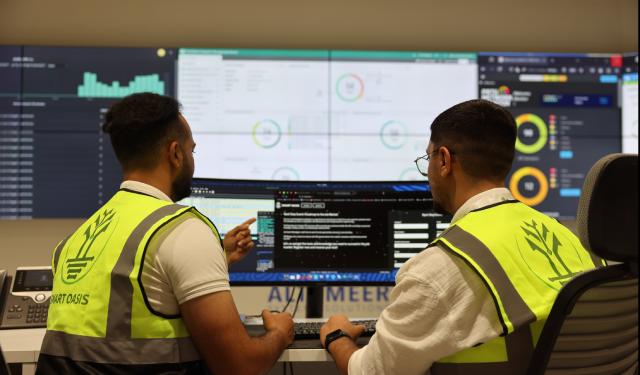
Design and Implementation of Complete Network Infrastructure



Client
American University of Iraq-Baghdad
Duration
2 years
Category
Infrastructure Development
Date
2018
Project Summary :
Design and implementation of Complete network infrastructure which involves creating a robust and scalable system to support the academic, administrative, and research activities of the institution.
Project Scope :
1) Network Architecture
1.1 Core Network :
Design a core network backbone that interconnects various campus buildings and facilities.
1.2 Distribution Network :
Establish distribution switches to connect different departments, labs, and administrative offices within each building.
1.3 Access Network :
Deploy access switches and wireless access points (WAPs) to provide connectivity to end-user devices such as computers, laptops, smartphones, and IoT devices.
2) Connectivity and Bandwidth
2.1 High-Speed Connectivity :
Ensure high-speed connectivity throughout the campus to support multimedia content, online learning platforms, research collaboration, and administrative applications.
2.2 Infrastructure :
Implement fiber-optic cables, Ethernet connections, and Wi-Fi technology to provide reliable and high-bandwidth internet access.
3) Wireless Network Infrastructure
3.1 Campus-Wide Coverage :
Design a campus-wide wireless network infrastructure with seamless coverage and roaming capabilities.
3.2 Wi-Fi Access Points :
Deploy Wi-Fi access points (APs) in strategic locations to provide reliable connectivity indoors and outdoors, including classrooms, libraries, cafeterias, and common areas.
4) Security Measures
4.1 Cybersecurity :
Implement robust security measures to protect the university network from cyber threats, unauthorized access, and data breaches.
4.2 Network Protection :
Deploy firewalls, intrusion detection/prevention systems (IDS/IPS), and endpoint security solutions to monitor and secure network traffic.
4.3 Access Control :
Configure access control policies, VLANs, and network segmentation to restrict access to sensitive data and resources.
5) Network Monitoring and Management
5.1 Monitoring Tools :
Implement network monitoring tools and management software to monitor the performance, availability, and security of the network infrastructure.
5.2 Management Protocols :
Use network management protocols such as SNMP to collect data, monitor network devices, and troubleshoot issues proactively.
6) Scalability and Redundancy
6.1 Scalability :
Design the network infrastructure to be scalable and adaptable to accommodate future growth in user demand, devices, and applications.
6.2 Redundancy Mechanisms :
Implement redundancy and failover mechanisms such as redundant links, backup power supplies, and redundant network devices to ensure high availability and resilience.
7) Integration with IT Services
7.1 IT Service Integration :
Integrate the network infrastructure with other IT services and systems such as email servers, learning management systems (LMS), library databases, and administrative applications.
7.2 Interoperability :
Ensure seamless access and interoperability between network resources and IT services to support the academic and administrative functions of the university.

